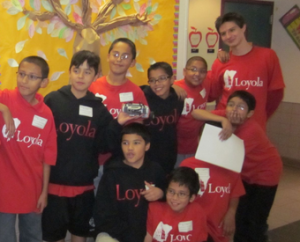Dweck, C. S., Chiu, C., & Hong, Y. (1995). Implicit Theories and Their Role in Judgments and Reactions: A World From Two Perspectives. Psychological Inquiry, 6(4), 267–285.
The Article
This week I am reviewing one of the references listed in last week’s research article blog. Dweck, Chiu, & Hong’s 1995 article in Psychological Inquiry is seminal in the mindset literature. The authors explore the concepts of what has come to be known as “mindset” – whether one believes that certain aspects of self are fixed or whether growth is possible (Yeager & Dweck, 2012). In the 1995 article being reviewed in this blog entry those binary descriptions are labeled (respectively) “entity” and “incremental” implicit theories. This research comes from the field of psychology and has worthwhile implications for educational practice.
Though this article is a couple degrees removed from any of our assigned readings for class, the authors sing what has become a familiar tune by now: Be aware of bias. Just as bias is naturally found in a scientist’s interpretation of data based on implicit assumptions, the authors suggest that biases or implicit assumptions also guide an individual’s view of life – in this case of “the way information about the self and other people is processed and understood” (Dweck, Chiu, & Hong, 1995, p. 267). Each individual is a “theorist” relying on implicit assumptions that influence their judgment and behavior. In essence, bias plays a part on the macro level in interpretation of data as well as on the micro level in an individual’s narrative.
The article is very well organized with useful headings and subheadings and a well-written abstract that allows the reader to anticipate what’s to come in the article. A thorough groundwork is laid, beginning with reference to psychological theories from the 1950’s, to help readers clearly see the authors’ path. The meat of the study is examining biases or orientations toward two particular attributes – morality and intelligence. To establish the reliability and validity of the entity and incremental orientations toward morality and intelligence, the authors include the three uni-directional statements from the assessment used to determine entity or incremental orientation. Both internal and external reliability are high as evidenced by the review of six validation studies. The validation studies also show that a person’s bias or implicit theory is not a function of age, gender, political or religious affiliation. Nor is orientation, or bias, necessarily the same across all attributes. The biases for morality and intelligence are statistically independent. For example, a person can have an entity (or fixed) theory on intelligence, yet an incremental (or growth) theory on morality.
Dweck, Chiu, & Hong (1995) propose that the two different implicit theories lead to different psychological stances. For one who holds an entity orientation, for example, any encounter will be a measure of their (fixed) attribute, making every encounter a potential threat and encouraging defensiveness. For the person with an incremental theory, every encounter is an opportunity to grow and learn (Dweck, Chiu, & Hong, 1995). As an educator, I want students to experience their encounters with life (including school) as an opportunity for learning and growth. And the good news is that one’s orientation toward an entity or incremental bias is not fixed; it can be influenced by external stimuli (Sriram, 2014).
I have only a few minor editorial comments. I was surprised to notice a couple of typos in the text. They popped up without my intentional search for them – leaving out a word, repeating a word and forgetting a marker for one item in a list of three. They were only slight hiccoughs in the reading and did not distract from the meaning of the text. In keeping with the theory being studied in this article, I noticed that my explanation to self about the errors fall on the incremental side of things. I believe the errors may exist because this article was published nearly 20 years ago before we had as much technological support to catch errors. If the same article were published today, I’d be surprised to find more than one error.
One other weakness of the research analysis offered in this article is that the demographic variables of the study participants were not addressed except in the validation studies. The authors were at Columbia University, an exclusive private institution, at the time of this publication. They refer to studies taking place in their lab. If their participants mirror the demographics of the school and are mostly White and privileged, will that impact the generalizability of the theory? Might there be nuances in the theory with a more nuanced population set?
My Line of Inquiry
The theory of mindset provides a great foundation for the kind of impact I want to have as I develop my line of inquiry. Research is supporting that if students have a growth mindset they are more likely to engage in goal-directed behaviors and to believe in their own self-efficacy and in the ability of others to change (Yeager & Dweck, 2012). At the community college, many of our students have been marginalized and are skeptical about the system and how accommodating it will be for them. If students believe the system is not on their side and they have a fixed mindset they are more likely to give up. If I can encourage the students I work with towards a growth mindset, then their belief in themselves and corresponding goal-directed behaviors may increase. At the same time, we will be cultivating the belief that the system can change and become a better partner for students as they pursue their personal, career, and academic goals.
References
Dweck, C. S., Chiu, C., & Hong, Y. (1995). Implicit Theories and Their Role in Judgments and Reactions: A World From Two Perspectives. Psychological Inquiry, 6(4), 267–285.
Sriram, R. (2014). Rethinking Intelligence: The role of mindset in promoting success for academically high-risk students. Journal of College Student Retention: Research, Theory, and Practice, 15(4), 515–536.
Yeager, D. S., & Dweck, C. S. (2012). Mindsets That Promote Resilience: When Students Believe That Personal Characteristics Can Be Developed. Educational Psychologist, 47(4), 302–314. doi:10.1080/00461520.2012.722805


